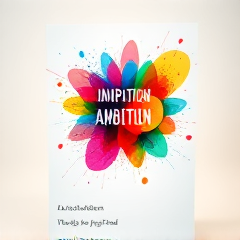Review of the book «Creative Marketing. How to stand out from the competition and create viral campaigns» — Andrey Milliardov
The book illustrates its theses with case studies that are not just pulled out of thin air, but are backed up by real numbers:
- A brand that increased its social media reach thanks to a single non-standard campaign.
- A startup whose viral video garnered millions of views in a week, turning an inconspicuous product into a topic of discussion even outside the industry.
Reading these stories, you can't help but feel a mix of envy and admiration: why didn't I come up with that?
It's important that Miliardov doesn't get lost in abstractions, but repeatedly returns to the need to:
- Feel your audience's pulse;
- Not be lazy about testing hypotheses;
- Not be afraid to break established patterns.
The book doesn't put you to sleep - it provokes, makes you take a critical look at your experience, and sometimes you even want to exclaim: "Why be so merciless in exposing others' failures and successes?" However, it's this honest, sometimes caustic, look that makes the publication so lively and useful, especially for those who are tired of stewing in their own juice and are looking for new paths through the marketing noise.
Key Concepts and Their Analysis

"Millions on the Fingers" not only explains why the old good "let's do it like our competitors" is a straight path to nowhere, but also supports each thesis with fresh, not worn-out examples:
- The story of an unknown local coffee shop that, by launching the "Pay with a Smile" flash mob, increased the flow of new visitors in a month.
- The coffee shop skillfully monetized this surge with seasonal offers.
The scrupulous analysis of tools will also not be overlooked: the author does not juggle fashionable terms, but meticulously explains:
- How to choose a platform for launching viral content.
- Why storytelling works in one case, and provocation in another.
- How not to overdo it with emotions, so as not to get the opposite effect.
At some point, you catch yourself thinking that the usual patterns of behavior in advertising begin to seem archaic: the author so clearly reveals the mechanism of emotional involvement and breaks stereotypes about "correct" creative solutions. As a result, after each section, you want to close the book and run to test it in practice, because even the most skeptical reader will catch themselves thinking: "What if it works for me too?"
Who is the book for
There are no empty promises for “everyone and anyone” here — the book's target audience is sharply defined without any gray areas:
- Battle-hardened marketers
- Startups
- Entrepreneurs hungry for new ideas
- Those tired of dull routine
A reader who's ready not just to listen, but to grab tools and move their business forward, will find here not just another set of general phrases, but a specific roadmap with checklists and real-world examples (not from the parallel reality of Western giants, but from the nearest street).
And most importantly — with an explanation of why some tricks work, while others risk falling flat.
The book is especially suitable for those who:
- Tried “like everyone else”
- Missed deadlines and budget
- Agonized over why the crowd didn't line up
Because here you'll learn how to do it differently and avoid repeating others' mistakes. If you're looking for a “magic button”, move on, but if you're itching to experiment — this guide will become your go-to resource.
About the author and his significance in marketing

It's hard not to notice that Andrey Miliardov's name has long become a password to enter the circles where marketing is not discussed by the textbook, but lived through personal experience - sometimes with pain, sometimes with wild delight.
- Behind him are not just years of work, but dozens of projects, where each subsequent one is another attempt to squeeze the maximum out of dull statistics and turn a banal promotion into an event that even grandmothers at the entrance talk about.
- His authority is backed not by ephemeral titles, but by real results: it's enough to recall the launch of "Pelmennaya №7" in Novosibirsk - within a month, the coverage increased 2.5 times, and the flow of new clients left the owners in mild shock.
- Miliardov is not one of those who feed the audience with retellings of Western cases - he brings to light stories from Russian realities, where everything is complicated, unpredictable, and success is given to those who are not afraid to take risks.
- That's why his approach arouses not only interest but also respect: he can explain complex things in simple language without slipping into infantilism, and his advice makes you want to implement it immediately because it smells like life, not cabinet wisdom.
The Place of the Book in Modern Marketing Literature
While bookstore shelves are overwhelmed with similar guides where marketing is presented with a sauce of dry theory and endless "musts," this edition stands out like a rare bird among a flock of gray sparrows.
Among modern works on promotion and branding, it occupies a special place due to its honesty and attention to detail, which are usually drowned in a sea of template advice. There are no borrowed schemes from another translation of American bestsellers here — instead, the reader encounters vivid examples that reveal familiar realities:
- dissatisfied client
- a budget that is not limitless
- the eternal "let's try something at least"
I can't help but note that among the new releases of recent years, it's hard to find another book that so convincingly shows that success doesn't fall from the sky, but is forged through courage and resourcefulness — the author doesn't just talk about how to stand out, but literally pulls the reader out of the swamp of mediocrity by the ears.
This is exactly what explains the hype around the book: it doesn't teach you to live "by the manual," but inspires you to shake things up and finally bet on originality, even if it means risking everything.
| Criterion | Edition | Other guides |
|---|---|---|
| Honesty | ||
| Vivid examples | ||
| Originality |
Relevance of the publication at the moment

In an era when the market changes the rules of the game more often than a teenager changes their social media status, the appearance of this book turned out to be like an icebreaker among the icebergs of outdated marketing approaches: its practical advice is not about “assembling a dream team” or “conducting a brainstorming session under the flag of innovation”, but about how to really break through the daily information noise.
- The author doesn't waste time on general words, but shows specifics — from case studies where promotion budgets didn't exceed the cost of a coffee break in a Moscow coworking space.
- Fresh hacks for creating content that engages even the most indifferent user.
- In conditions where TikTok trends replace each other at a dizzying speed.
- Competitors clone ideas faster than they can be published.
- Recommendations from this book literally save from the feeling of a “marketing Groundhog Day”.
Reading doesn't turn into a boring obligation: on the contrary, there is a strong desire to immediately implement at least one of the techniques — and, damn it, check if it will work on your project.
Fundamental Marketing Concepts

The author doesn't waste time on banal explanations of what a "target segment" is and why it's essential to know your audience — they immediately dive the reader into the thick of things:
- Segmentation — breaking down into micro-groups down to the last subscriber
- Positioning, where every word is like a shot
- Competent use of the basic principles of USP and emotional triggers
- No castles in the air, only the dry residue: specific mechanics that work under conditions of a limited budget and fierce competition
Reading these pages, you catch yourself thinking — this is the real meat of marketing: not about "innovative thinking," but about how simple tools, correctly applied, produce results that you want to immediately replicate in your business.
Innovative ideas and modern trends
You won't hear dull grumbling about "century-old industry traditions" here — on the contrary, the author dives headfirst into what really drives the market:
- Hyper-segmentation automation through chatbots
- Integration of user-generated content into offline campaigns
- Unobvious partnerships with micro-bloggers — when the promo budget doesn't exceed the cost of a couple of movie tickets.
Not just dry theory — here, every tool is dissected to the smallest detail, and, what's particularly valuable, specific implementation scenarios are provided: you don't need to rack your brain on how to apply these solutions in real business.
While reading, you can't help but feel a mix of envy and admiration — the author reveals new approaches so fresh and practically applicable that it seems they were obvious, but for some reason aren't used by 90% of companies.
Relevance of Concepts in Modern Business
It is here, on the pages of this book, that ideas cease to be mere catchy slogans for presentations and take on the flesh and blood of real business: each case is like a shot in the bullseye.
Reading about how a small coffee startup turned into a magnet for young people through an unexpected campaign using local memes, you can't help but feel a rush of excitement and itching to replicate it yourself.
The author doesn't just provide "recipes" — they make you think about whether it's possible to play on the audience's emotions just as subtly, without resorting to banal copying of others' ideas.
What's particularly striking is their approach to collaborations: instead of dull discount wars, they spark attention, making people not just buy, but become part of the brand's story.
As a result, if you want to move your project forward, not just tread water, this is not another checklist manual, but a workbook with live hints, where every piece of advice can be implemented tomorrow.
| Criterion | Author's Approach | Traditional Approach |
|---|---|---|
| Creativity | High | Low |
| Engagement | Effective | Low |
| Approach to Collaborations | Innovative | Discount Wars |
Case studies and examples from real business
You won't find any dry diagrams or edifying quotes from textbooks here: instead, you'll find live stories.
Each chapter is like a series of experiments where mistakes are not swept under the rug, but broken down into molecules so that the reader can see not only triumph, but also pitfalls.
It's especially pleasing that we're not talking about mythical corporations with bottomless budgets, but about real entrepreneurs who just yesterday were standing behind the counter themselves.
This approach not only inspires, but literally provokes action: after reading, it's hard to remain a bystander, because the examples are broken down into components and provided with specific numbers, like a checklist for testing your ideas for strength.
Strengths of the publication
The strength of this book is its ability to speak the same language as those who are not ready to wait for the sea to calm down and prefer to take matters into their own hands today. There are no sugary slogans about "success" here; instead, there are analyses of real-life cases and examples.
The author doesn't hide the bumps under the rug and isn't afraid to talk about failures mixed with victories: this is not dry theory, but an honest conversation about how even a brilliant idea can stumble over a mundane courier forgetfulness or the wrong choice of advertising platform.
The reader doesn't just observe others' exploits but involuntarily applies each situation to their own business and, most importantly, receives detailed recipes:
- What worked, what didn't, and why.
And that's when the book literally pulls you out of your comfort zone — after such stories, you can't make excuses about a lack of budget or an "unsuitable niche", because the examples are from the lives of people just like you, not some super-rich individuals with millions in capital.
Critical Analysis
But not everything is smooth under the hood: the author, waving the flag of common sense, sometimes flirts with superficiality - in the pursuit of narrative dynamics, some solutions are presented too universally, as if it's enough to simply pull out the scheme from the book and stick it to your project.
This is especially felt where it comes to "virality" - it seems that it's enough to launch a marathon of free samples or a flash mob on social media, and voilà, fame is already at your doorstep.
But the real world, alas, is not so predictable:
- if in one of the examples the promotion really brought a third more orders,
- in another case, a similar endeavor ended in a flop - this is mentioned in passing, without a deep analysis of the reasons.
That's where a slight irritation arises: one wants not only inspiring stories but also honest digging into mistakes, analysis with numbers, and not just faith in the power of creativity.
Sometimes it feels that the author, carried away by practice, sidesteps the theoretical pitfalls that await anyone who decides to take a risk:
- there is no detailed analysis of risks,
- there are not enough examples where the experiment failed despite all efforts.
This approach motivates, yes, but leaves an aftertaste of incompleteness - as if the author has a couple of trump cards up their sleeve but is in no hurry to share them.
Tools and techniques for practical use
In an attempt to arm the reader with a set of working tools, the author scatters checklists, diagrams, and life hacks throughout the pages, like a generous chef who is not stingy with ingredients but forgets the recipe as a whole.
- Template for launching an interactive campaign:
- Step one - identify the audience's pain point
- Step two - come up with an unexpected move
- Step three - involve opinion leaders
However, when it comes to specifics, a too universal approach hides behind loud promises:
- No reference to business size
- Industry or budget
What is particularly noticeable is the lack of a step-by-step breakdown when it comes to implementation - one wants to see not only general recommendations in the spirit of "make it bright" but also real algorithms spelled out day by day, taking into account the pitfalls.
As a result, the toolkit, no matter how attractive it may seem at first glance, leaves behind a feeling of incompleteness: yes, it inspires you to try, but there is a lack of that very roadmap that will guide you through the wilds of the real market.
| Criterion | Approach | General recommendation |
|---|---|---|
| Universality | Weak | Specifics are needed |
| Lack of step-by-step guidance | Critical | Clear algorithms are necessary |
| Feeling of incompleteness | High | A roadmap is required |
Popularity of the current publication

The book "Creative Marketing. How to stand out among competitors and create viral campaigns" by Andrey Miliardov quickly found a response among marketers, entrepreneurs, and small business owners. It received positive reviews on popular book platforms, including "LitRes", "LitRPortal", and "MyBook", where readers note its practicality, lively language, and relevance of examples.
- The lack of "water" and focus on real-life cases distinguish the book from standard theoretical marketing guides.
Apparently, readers find in it not only a dose of inspiration but also a certain guiding light in a world where "standing out" has become a matter not of ambition, but of survival.
However, behind the facade of enthusiastic reviews, a note of disappointment sometimes creeps in: they say that after reading, a slight feeling of bewilderment remains - it seems useful, but as if one expected more.
Nevertheless, it is the discussability and keen interest in the book that speak of its impact on the market - it has become the subject around which disputes are built and new views are formed, which means it has hit the mark of the audience's expectations, even if it did not fully satisfy them.
Other works by the author
If you try to follow the creative trajectory of Miliardov, it quickly becomes clear: he is by no means a newcomer to the world of business literature and doesn't pull his advice out of thin air.
- On the shelf of a curious reader, there are likely already his «Creative Marketing» — the very work where the author shatters stereotypes about aggressive sales.
- And also — «Marketing without a budget», in which Miliardov skillfully dissects the subtleties of digital promotion, not hesitating to give examples from both domestic and foreign business.
- Notably, against the backdrop of his fresh book, his previous works look less spectacular: yes, they are rich in facts and practice, but they don't cause such a stir in professional circles.
But now, when the competition in the market of ideas has reached its apogee, Miliardov, like an experienced conductor, skillfully switches the audience's attention from the basics of the craft to bold experiments, not being afraid to take risks and sometimes even stumble.
It's felt that each new publication is a kind of evolution, and if his early books became desk books for beginners, the latest one tries to speak the language of the time: boldly, sometimes controversially, but always — to the point.
Comparison with other works by the author
If we rewind the tape back and recall how it all started with Miliardov, we can't help but notice: he used to appear as a meticulous researcher, armed with a magnifying glass and a calculator, obsessed with finding patterns in the world of brands and advertising battles. But now, we see a completely different author before us — one who is not afraid to challenge his own previous views.
In his new work, he, like an experienced director, deliberately breaks the usual emphasis: instead of the usual checklists and step-by-step instructions that were the dominant currency in his previous publications, everything is built on provocation, unexpected conclusions, sometimes even on the verge of foul play.
It is particularly striking that if his previous books were clearly tailored to specific tasks — whether it was increasing sales or building a content strategy, the fresh work is more like an intellectual challenge: here, the reader is not so much taught as provoked to think, try, make mistakes, and try again.
Such a shift in approach gives his new book special relevance, and Miliardov himself appears before the reader not just as a mentor, but as a provocateur and experimenter who is not afraid of being misunderstood — and it is precisely for this that he is discussed on forums more than ever today.
| Parameter | Old Approach | New Approach |
|---|---|---|
| Focus | Checklists | Provocation |
| Strategy | Increasing sales | Intellectual challenge |
| Approach | Textbook | Experiment |
Similar literature by other authors
Recently, on the shelves of marketing departments and personal libraries, works that seem to compete with each other in eclecticism and boldness of presentation are increasingly appearing:
- “Decoding Marketing” by Phil Barden — where Milliarдов shocks and provokes, Barden operates with the sparse, but impeccable logic of neuromarketing.
- “Write, Reduce” by Ilyakhov and Sarycheva: in their book, there is no place for creative chaos, but every paragraph is like a sharpened scalpel, cutting through not only the text but also the illusions about the simplicity of modern communications.
Against the background of these publications, the fresh work of Milliarдов resembles an argument on raised tones — here you won't find academic deliberateness or clear algorithms, but there is a challenge that doesn't let go until the last page.
Competitors by pen offer schemes that are convenient to include in a presentation or KPI-report, and he literally insists: throw away the instructions, find your own way.
And if someone thinks that such an opposition is just a marketing trick, it's worth looking at the numbers:
It turns out that in the market of literature about advertising, it's no longer just a competition of ideas, but a real duel of characters — and Milliarдов, unlike competitors, has chosen for himself the role of a troublemaker who doesn't let you get bored for a second.
